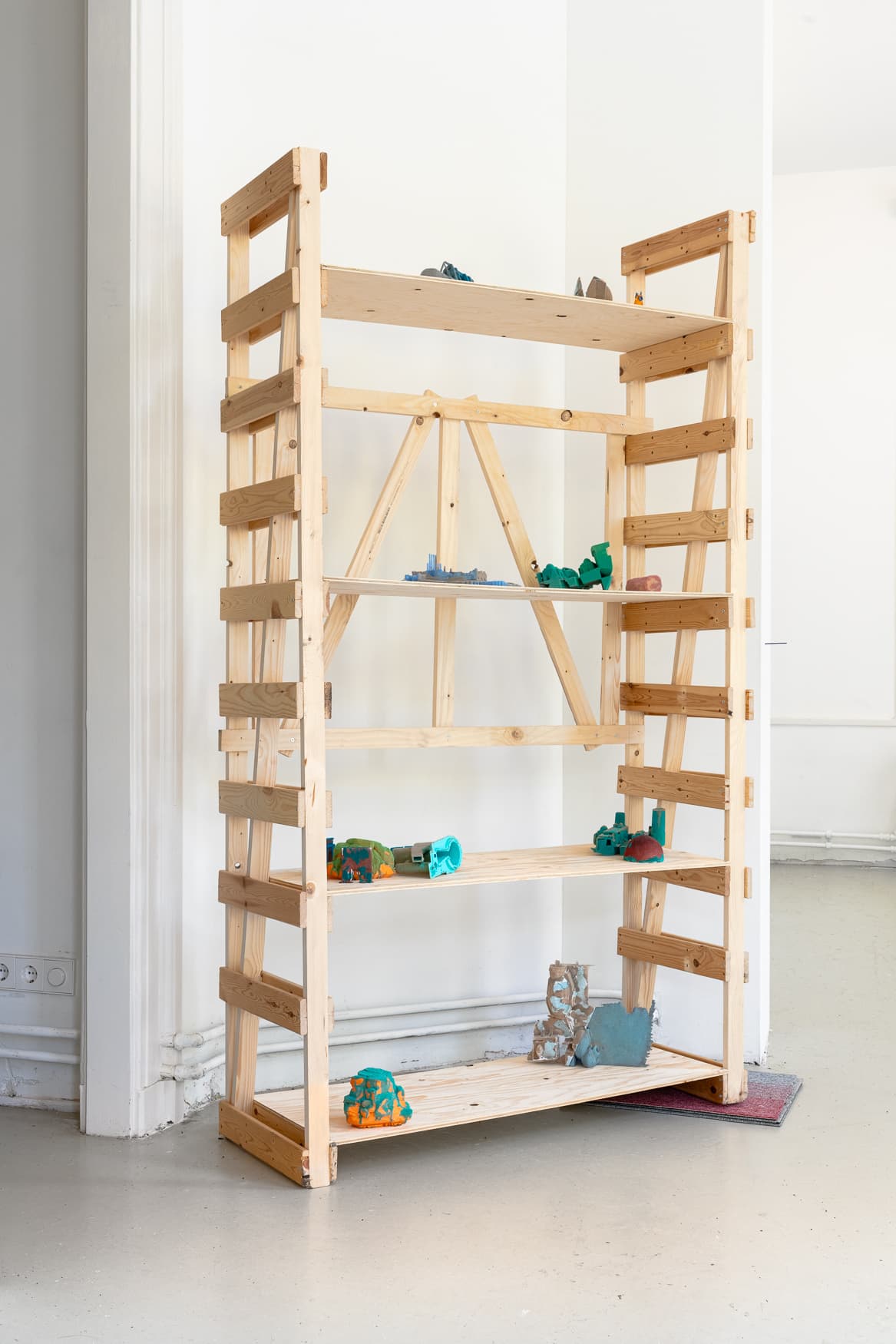Waèl el Allouche
Fine Arts
Biography
Waèl el Allouche is a Dutch-Tunisian artist whose work explores the interplay between data, identity, and material transformation. Raised between Tunisia and the Netherlands, he researches and reconstructs natural and cultural phenomena through digital fabrication, sculpture, and situations.

Every Expected Is Happening / Metti Is Rentseeking
Description: "Metti is Rentseeking" and "Every Expected Is Happening" are two works that together form a living archive of speculative resistance. Rooted in fiction, auto-theory, and inherited memory, these projects explore how ideas, inventions, and untold histories can be preserved—not by storing them in institutions, but by activating them in public life. Whether through a market stall or a ripped 3D game environment, both works insist that knowledge is not something to be displayed—it is something to be used, shared, and lived. "Metti is Rentseeking" is an informal social chain, beginning from the Tunisian soil and ending as a market stall at dappermarkt. It starts with a simple gesture: importing 100 kilos of handmade harissa from Tunisia, made by partly by my family and others within the social chain, and selling it at the Dappermarkt in Amsterdam. But this act is layered with resistance, care, and critique. The harissa is not just food—it is a form of memory, labor, and survival passed through generations. The market becomes a stage for informal economies, diasporic exchange, and reclaiming value from colonial systems that have extracted without giving back. This work responds to the idea of rent seeking—benefiting without contributing—by doing the opposite. Metti inserts value into community systems, not institutional ones. Named after my grandmother, Metti is a mythic figure of softness and solidarity, the keeper of our recipes and the architect of our survival. Alongside the market is The Kitchen, a second environment where stories, legends, and inventions are preserved—not behind glass, but in use. It is an anti-museum, a space where history is still warm, still cooking, still changing hands. Here, archiving is not passive—it is active, daily, and defiant. Whether it’s a jar of harissa or a whispered recipe, the knowledge lives in motion. Metti Harrissa is one idea among many—part of a wider network of potential inventions, rituals, and gestures meant to be reactivated by others. At its core, Metti Harrissa questions what is allowed to circulate and accumulate in our systems—who gets to extract, and who is erased. In economic terms, rent seeking is the act of extracting value without giving anything back to society. This logic underpins colonialism, modernism, and much of the formal art world. Metti reclaims that term, not to perform corruption, but to expose it. Through small-scale trade, storytelling, and ancestral recipes, I propose another economy—one that is peer-to-peer, relational, and rooted in love and defiance. The aim is to create an informal chain from supplier, transporter and the seller. This project is a continuation of Metti, a growing initiative grounded in food, heritage, and shared knowledge. It is named after my grandmother, and carries with it the solidarity and improvisation of generations of women who laboured to feed, nurture, and remember. The harissa itself is a sculpture, but also a portal: it is handmade, time-consuming, and resistant to mass production. It tastes like survival. To sell it at the market is not to commercialize it, but to insert it into an ecosystem of exchange that refuses institutional containment. Every Expected Is Happening unfolds in a very different space: a ripped blockbuster 3D game environment installed at Bradwolff Projects. Originally conceived as a play, it evolved into a broken, immersive terrain built from speculative fiction, digital fragments, and SWANA (South West Asia and North Africa) visual culture. This is not a game you can win. It’s a story you wander through—a landscape of failed simulations, colonial ruins, and architectural dreams. At the heart of this project is Loulou, a fictional character rooted in autobiographical experience. Neurodivergent, displaced, and highly sensitive, Loulou becomes a lens through which to explore childhood, diaspora, and the radical potential of fiction. His body becomes a transmitter of history, and the installation itself is a materialised nervous system—filled with recycled assets, broken symbols, and poetic debris. It is a cinematic world where legends like the Sirat Hillaliya are reimagined through feminist, ecological, and anti-colonial frames. This work is an archive of ideas and inventions that could become real—much like the harissa market. But here the archive takes the form of a speculative terrain, more like a miniature train landscape of memory and potential. Sound, scale models, and narrative loops create a space where knowledge can be felt as well as thought. This is not an escape from the world, but a way to grow it, perpetuate it, and insist on another version of it—through fiction, theory, and design.
